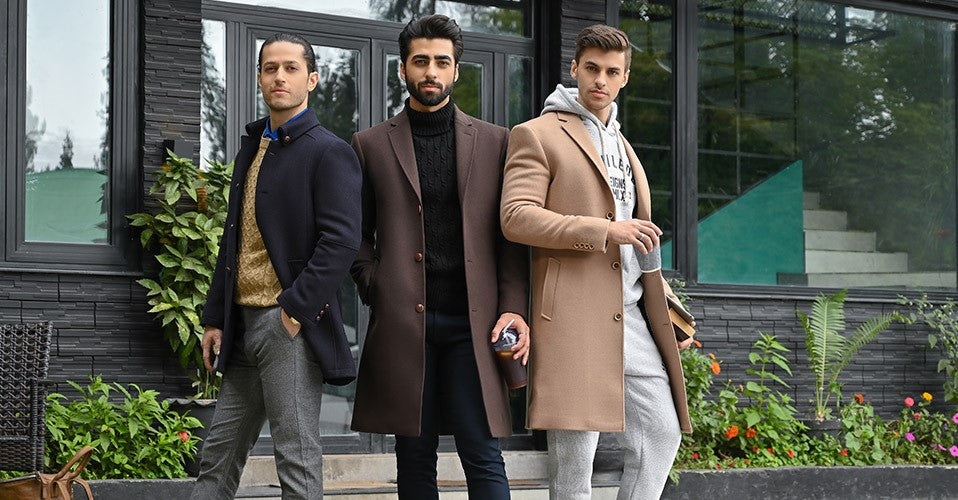What should an overcoat be made of?
Posted by DANISH FAREED

Selecting the right material for an overcoat is crucial for both style and functionality. The overcoat serves as a prominent piece in your winter wardrobe, offering warmth and enhancing your overall look.
In this guide, we will explore the various materials commonly used in overcoats, discussing their characteristics, benefits, and style considerations.
Wool: Classic Elegance and Warmth
Woolen overcoats have long been the epitome of classic winter elegance. The natural fibers of wool provide exceptional insulation, keeping you warm even in the coldest temperatures. Wool overcoats come in different weights, making them versatile for various climates.
Merino wool, known for its softness and fine texture, is a popular choice for overcoats. It drapes well and provides a luxurious feel while maintaining warmth. Additionally, wool is naturally water-resistant, making it a practical choice for winter precipitation.
Cashmere: Unparalleled Luxury and Softness
For those seeking the pinnacle of luxury, cashmere overcoats are an excellent option. Derived from the soft undercoat of cashmere goats, cashmere fabric is known for its exceptional softness and lightweight warmth. Cashmere overcoats exude sophistication and are ideal for formal occasions. However, it's worth noting that cashmere can be more delicate and may require extra care.
Tweed: Textured and Timeless
Tweed overcoats bring a textured and rugged aesthetic to winter outerwear. Made from wool, tweed is a thick, durable fabric that originated in Scotland. Its coarse texture and distinctive patterns make it a timeless choice for those who appreciate a more rustic look. Tweed overcoats are excellent for casual and outdoor settings, providing both warmth and style.
Cashmere Blend: Balancing Luxury and Durability
A blend of cashmere and other fibers, such as wool or synthetic materials, offers a compromise between luxury and durability. A cashmere blend overcoat combines the softness of cashmere with the sturdiness of other fibers, making it more resistant to wear and tear. This option is suitable for individuals who want a touch of luxury without compromising on practicality.
Camel Hair: Natural Elegance and Insulation
Camel hair overcoats provide a unique and elegant alternative. Sourced from the soft undercoat of Bactrian camels, camel hair is known for its warmth and insulating properties. Camel hair overcoats often feature a natural, light tan color, adding a touch of sophistication to your winter wardrobe. The fabric drapes well and has a smooth finish, making it an excellent choice for both formal and casual occasions.
Technical Fabrics: Modern Functionality
In recent years, overcoats made from technical fabrics have gained popularity. These materials, such as Gore-Tex or other advanced synthetic blends, offer superior water resistance, breathability, and insulation. Technical fabric overcoats are ideal for individuals who prioritize functionality and outdoor activities. While not as traditional in appearance, they provide a modern and practical solution for harsh winter conditions.
Conclusion
In conclusion, choosing the right material for your overcoat depends on a combination of personal style preferences, intended use, and climate considerations. Whether you opt for the classic warmth of wool, the luxurious softness of cashmere, the textured appeal of tweed, or the modern functionality of technical fabrics, each material brings its own unique characteristics to the table. Ultimately, a well-chosen overcoat not only keeps you warm but also elevates your style, making it a key investment for the winter season.






















